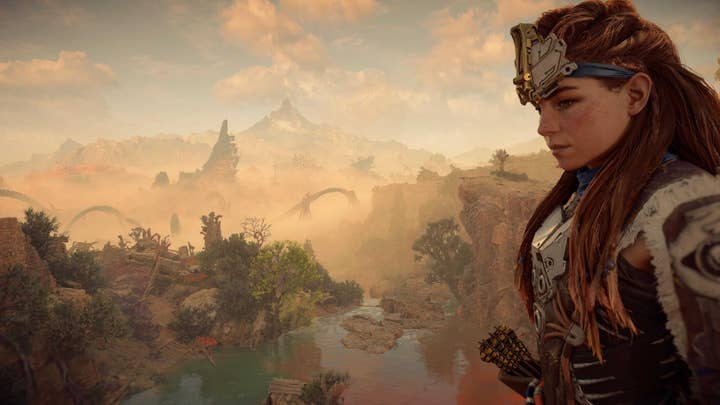Redaction errors reveal the economics of exclusivity | Opinion
Badly-redacted documents from the FTC vs Microsoft show why platform exclusivity is such a big deal
Sign up for the GI Daily here to get the biggest news straight to your inbox
We always knew that the court hearings around the FTC’s challenge to Microsoft’s acquisition of Activision Blizzard would reveal some interesting details, but we got rather more details than anyone had bargained for this week – courtesy of someone with a Sharpie marker who is presumably having a very, very bad few days at work.
Documents from both Sony and Microsoft which were meant to have key details censored before being entered into the court records were clumsily redacted with a marker, leaving the figures quite legible on the court’s scanned versions of the documents. It’s not clear who was actually at fault here – there was some guffawing in Sony’s direction when its badly redacted documents emerged, but then Microsoft was hit by the same problem, raising the possibility that both companies’ details had leaked due to errors by a third party.
Either way, the insight we got into various parts of the two companies’ businesses were very interesting – from the size of Microsoft’s Azure cloud business to the fact that Sony estimates that there are around a million PlayStation owners who never play any game except Call of Duty.
Perhaps the leak that has provoked most interest and surprise among consumer audiences, though, is the confirmation of the development budgets for Sony’s major first-party titles, with both Horizon: Forbidden West and The Last of Us Part 2 confirmed to have cost more than $200 million to develop.
Exclusivity is currently the best way for companies to maximise income from actual sales of the game without relying on post-launch revenue to make back its costs
To some degree, the surprise people outside the industry feel about these numbers is understandable. These are in line with Hollywood blockbuster budgets (although the games industry’s costs still trail the very high end of that range, where we find films like Avengers: Endgame costing around $350 million to make), but ordinary people can see where the money is going in a Hollywood production. Star actors alone can account for tens of millions of dollars in a budget, huge sets are constructed, complicated stunts are staged, and expensive things get crashed, blown up, and generally wrecked for our entertainment.
It’s perhaps harder for people to grasp where a similar budget goes in game development, absent highly-paid celebrities, enormous sets, and real-life explosions. This lack of understanding of the costs involved in creating huge, meticulously detailed, interactive worlds for players to explore may go some way to explaining the disconnect between what consumers demand from their games and how they value them financially.
If anything, Sony’s figures for the costs of these games (which are no doubt similar to all its other major exclusives) are probably somewhat conservative; we don’t know the details of how the numbers were calculated, but I wonder if they take into account indirect costs related to resources from other parts of the company that would have gone into supporting the creation of these games.
One thing we know they don’t include is the marketing budget. For Hollywood movies, marketing costs are conventionally understood to be about half of the overall outlay on the movie, so it’s conventional to double the production costs in order to get the full budget. I’d be surprised if Sony’s major exclusives undershot that marker – but given that marketing for its first-party titles is often inextricably woven into its overall platform marketing for PlayStation, the numbers could be even higher, albeit hard to calculate.
For reference, Horizon: Forbidden West has sold about 8.4 million copies, and The Last of Us Part 2 has shifted over 10 million. For Sony, both of these games are profitable – but “for Sony” is doing a lot of work in that sentence. For any other publisher, turning a profit from these games would have been a lot harder, because the economics of being a platform holder with a significant first-party software line-up are somewhat unique.
The question is, why would a company with a major title sign up to limit its potential audience to one platform?
With the exception of the percentage earned by retailers for physical copies of these games, Sony gets to keep all the money from first-party titles. Sony earns a cut of the sales of third-party games on PlayStation, which of course it gets to keep with first-party games – meaning that its own games can justify very large budgets more easily, as they generate more revenue per unit sold. A further justification for taking this kind of risk on high development costs is that the games themselves serve as promotion for the platform – even if a game doesn’t directly turn a profit, it might still end up being a worthwhile investment if it helps to sell a lot of PlayStation consoles.
This isn’t to say that Sony is the only company spending these kinds of numbers on the development of major AAA titles – far from it – but it goes some way to explaining how it’s able to get away with a different approach to most third parties.
The economics of a platform holder building games for its own hardware are just different, and the end result is that Sony is one of a very small number of companies that can afford to spend these kinds of budgets on development while still sticking to a relatively old-fashioned pay-to-play business model. Neither game features any kind of battle pass, microtransactions, or any other post-launch monetisation strategy; Horizon: Forbidden West got one major DLC, a whole new section of the game that’s analogous to an old-fashioned expansion pack, while The Last of Us Part 2 had no post-launch content (and even got a free patch upgrading for PS5 owners a year after launch).

That’s an exceptionally rare thing these days, precisely because it’s very challenging for a game with a $200m+ budget and the same again in marketing costs to make back its money without the benefits of long-tail revenue from battle passes or a shot in the arm from microtransaction whales. Sony can afford to do it because it earns more money for every game sold, and can write off a chunk of the costs as being essential for promoting the PlayStation platform.
Other publishers generally don’t have that luxury; their options are either to rein in their development budgets (and risk not being able to keep up with the expectations of their consumers), to adopt more aggressive monetisation strategies, or to link up with a platform holder in an exclusivity deal that allows them to tap into the economic advantages usually reserved for first-party games.
As development budgets creep upwards, the lure of exclusivity deals is only likely to increase
That last part is crucial, because so much of the discussion around the FTC case (and the Activision Blizzard acquisition in general) is to do with the question of platform exclusives. Satya Nadella says he doesn’t like them at all, which is pretty much what anyone would say when they’re competing with a rival that spent 15 years building up a world-class first-party studio system while you twiddled your thumbs and then whipped out your chequebook at the last minute to try to make up for it.
There’s a reasonable discussion to be had about whether there’s a meaningful difference between Microsoft buying publishers to make their games exclusive (either Xbox-exclusive, or multi-platform but exclusive to Game Pass for subscription services, which is inevitably what will happen to Activision Blizzard’s catalogue), and Sony striking deals to make games like Final Fantasy XVI exclusive to PlayStation. The question is, why would a company with a major title sign up to limit its potential audience to one platform? We talk casually about publishers being paid by platform holders for exclusivity – money hats and the likes – but the actual economics of what happens here is a little different.
Let’s say you’re Square Enix, and you’re developing Final Fantasy XVI at immense cost, likely not dissimilar to the numbers cited for Sony’s first-party games. You would rather not fill it with microtransactions to claw back your investment. I don’t have any precise insight into the deal between Square Enix and Sony (nobody has helpfully done a bad job with a Sharpie on that particular document), but it’s not hard to guess what the incentives look like.

By becoming a PlayStation exclusive, FFXVI more or less ends up having the economic advantages of a first-party title. Sony has most likely waived most, if not all, of its platform fee for the game, so every unit sold is more profitable for Square Enix; it has also almost certainly absorbed some of the marketing costs for the game by rolling it into its platform marketing strategy and budget, significantly reducing Square Enix’ spend on the marketing side. These things are much more important than any subsidising of development costs (the proverbial money hat) that may have been part of the deal, and certainly more important than the oft-cited savings from shifting to single-platform development, which are fairly marginal.
Understanding that this is the logic behind exclusivity from a third-party perspective – that it’s the only way for them to tap into the economic advantages enjoyed by first-party games – reveals the complexity of the arguments around this topic.
On many levels exclusivity is anti-consumer, denying a whole swathe of consumers access to a third-party game for solely business and competition related reasons. Yet at the same time, exclusivity is currently the best way for companies to maximise their income from actual sales of the game, reducing or entirely eliminating the need to rely on post-launch revenue to make back its costs.
That incentive waxes and wanes depending on the competitive landscape between consoles – publishers must balance the number of sales they’ll lose through going exclusive against the increased revenue per unit on the remaining sales, an equation that is very sensitive to the installed bases and demographic profiles of the various consoles.
For now, though, exclusivity is a powerful economic tool for the few games that have that option open to them – and as development budgets continue to creep upwards, the lure of such deals for third-party publishers is only likely to increase.
Sign up for the GI Daily here to get the biggest news straight to your inbox

